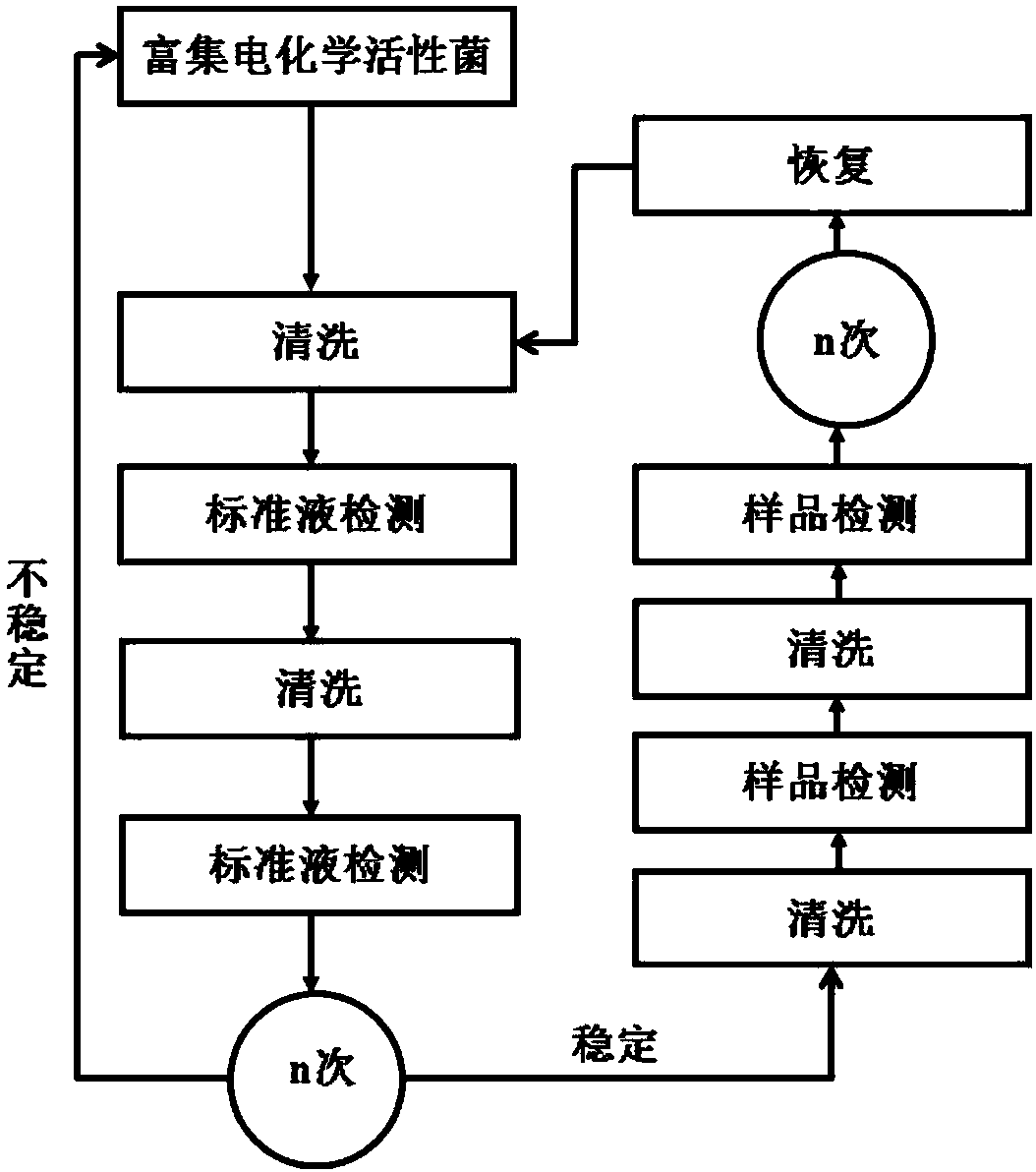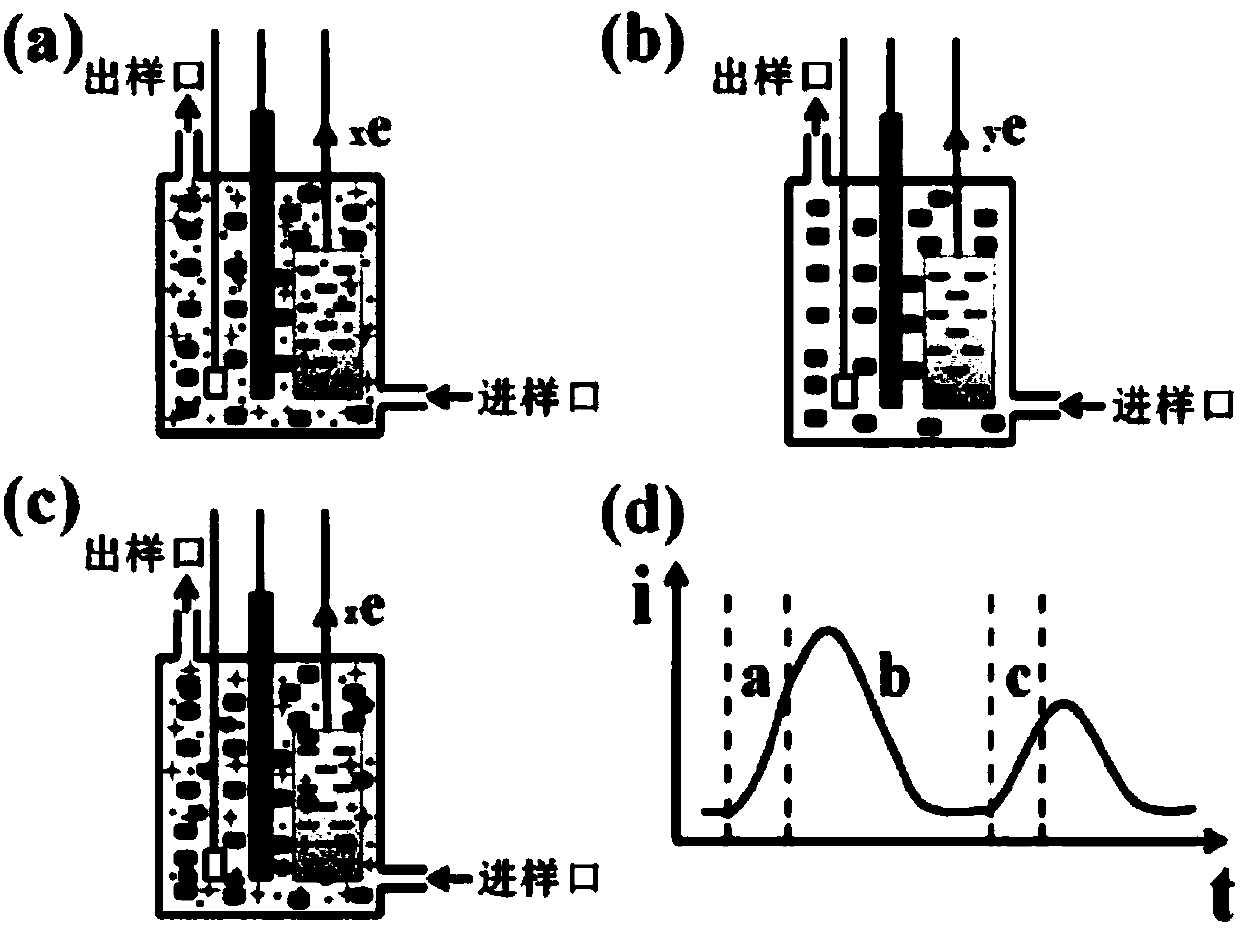Online toxicity monitoring device and monitoring method of bioelectrochemical system
A bioelectrochemical and monitoring device technology, which is applied in the field of on-line toxicity monitoring devices for bioelectrochemical systems, can solve the problems of expensive proton exchange membranes, easy poisoning of cathode catalysts, and limited pressure tolerance.
- Summary
- Abstract
- Description
- Claims
- Application Information
AI Technical Summary
Problems solved by technology
Method used
Image
Examples
Embodiment 1
[0140] The monitoring method of the bioelectrochemical system online toxicity monitoring device, the steps are as follows:
[0141] Step 1. Mix 0.8g of sodium acetate, 100mmol of PBS buffer solution, 5mL of vitamins, 12.5mL of trace elements and 335.5mL of activated sludge supernatant to 1L, stir evenly, ventilate nitrogen for more than 40min, airtight, and put it in a biochemical chamber at 38°C Cultivated in the box, after two weeks, the strains were obtained;
[0142] Step 2: Connect the bioelectrochemical system 5 to the electrochemical workstation through wires, inoculate the mixed solution into the bioelectrochemical system 5, place it in a biochemical box at 38°C for cultivation, and replace it when the current collected by the electrochemical workstation drops to 0.00003A For the mixed solution, when the peak value of the current, voltage or electric quantity of the bioelectrochemical system 5 does not increase for two consecutive cycles, it is considered that the bioe...
Embodiment 2
[0162] The device and monitoring method are the same as in Example 1, except that 100 μL of formaldehyde in Example 1 is replaced by 300 μL of formaldehyde.
[0163] After detection, the detection signal is as Image 6 As shown in (a~l), the average inhibition rate is 21.6%.
Embodiment 3
[0165] The device and monitoring method are the same as in Example 1, except that 100 μL of formaldehyde in Example 1 is replaced by 500 μL of formaldehyde.
[0166] After detection, the detection signal is as Figure 7 As shown in (a to p), the average inhibition rate was 36.4%. In order to investigate the recovery of the M3C sensor after being poisoned, seven cycles of 150mg / L sodium acetate solution were passed through, and the current peak value gradually increased (q~w).
PUM
 Login to View More
Login to View More Abstract
Description
Claims
Application Information
 Login to View More
Login to View More - R&D
- Intellectual Property
- Life Sciences
- Materials
- Tech Scout
- Unparalleled Data Quality
- Higher Quality Content
- 60% Fewer Hallucinations
Browse by: Latest US Patents, China's latest patents, Technical Efficacy Thesaurus, Application Domain, Technology Topic, Popular Technical Reports.
© 2025 PatSnap. All rights reserved.Legal|Privacy policy|Modern Slavery Act Transparency Statement|Sitemap|About US| Contact US: help@patsnap.com



